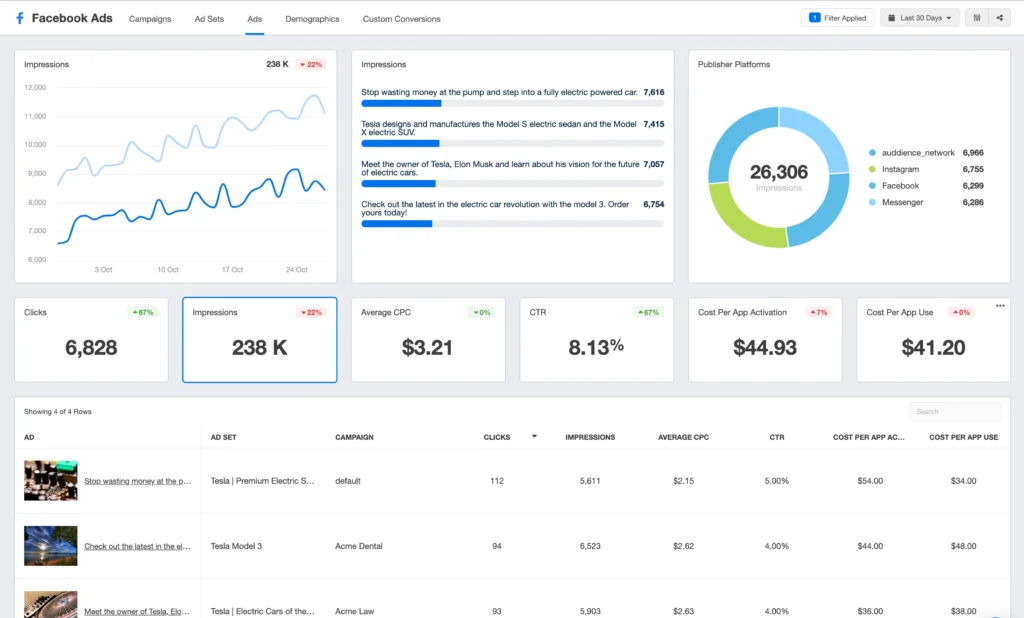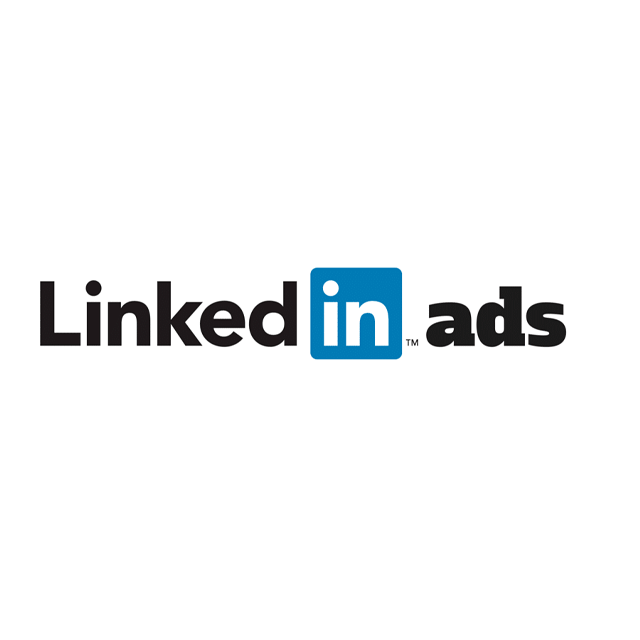Intrduction
In the dynamic arena of digital advertising, Google Ads, LinkedIn Ads, and Facebook Ads emerge as dominant contenders, each boasting distinct strengths and tailored targeting capabilities. Google Ads excels in intercepting user queries, strategically placing ads within search results to capture potential customers at the moment of inquiry. On the other hand, LinkedIn Ads offers a specialized platform for engaging with a professional audience, facilitating connections with decision-makers and industry influencers through its finely-tuned targeting options. Meanwhile, Facebook Ads leverages the unparalleled reach and detailed user data of the world’s largest social network to deliver personalized ads that resonate with users’ interests and behaviors.
As businesses navigate the complexities of online advertising, a comprehensive understanding of the unique attributes and functionalities of each platform is indispensable for crafting campaigns that effectively engage the target audience and drive tangible results. Let’s delve deeper into the specifics of LinkedIn, Google, and Facebook Ads to uncover how each platform can be harnessed to achieve marketing objectives and maximize ROI.
Introduction to Facebook Ads: Tapping into the World’s Largest Social Network
Facebook Ads have revolutionized the way businesses connect with their target audience online. With over 2.8 billion monthly active users, Facebook offers an unparalleled platform for businesses to reach potential customers globally. In this section, we’ll explore the fundamentals of Facebook Ads and how they can be leveraged to maximize your brand’s visibility and engagement.

Targeting Options: Reaching Your Ideal Audience on Facebook
One of the key advantages of Facebook Ads is its robust targeting capabilities. Businesses can define their target audience based on various demographics, interests, behaviors, and even life events. This precision targeting ensures that your ads are shown to the most relevant audience, increasing the likelihood of engagement and conversion. Whether you’re targeting young professionals interested in fitness or retirees passionate about travel, Facebook’s targeting options allow you to tailor your ads for maximum impact.
Ad Formats: Maximizing Engagement and Conversions
Facebook offers a diverse range of ad formats to suit different marketing objectives and preferences. From traditional image and video ads to carousel ads and immersive augmented reality experiences, businesses have ample opportunities to capture their audience’s attention in creative ways. By experimenting with different ad formats and optimizing for visual appeal and relevance, businesses can effectively engage their audience and drive desired actions, whether it’s website visits, app installs, or product purchases.
Budgeting and Bidding: Optimizing Spend for Maximum ROI
Effective budgeting and bidding strategies are crucial for maximizing the return on investment (ROI) of Facebook Ads campaigns. Businesses can set daily or lifetime budgets based on their advertising goals and allocate funds strategically across different ad sets and campaigns. Facebook’s auction-based bidding system allows advertisers to bid for ad placements based on their budget and desired outcome, whether it’s impressions, clicks, or conversions. By monitoring performance metrics and adjusting bidding strategies accordingly, businesses can optimize their ad spend to achieve the best possible results within their budget constraints.
Tracking and Analytics: Measuring Success with Facebook Pixel

To accurately measure the success of Facebook Ads campaigns, businesses can leverage the Facebook Pixel, a powerful tracking tool that provides valuable insights into user behavior and campaign performance. By installing the Pixel on their website, businesses can track conversions, optimize ad delivery, and create custom audiences for retargeting. The Pixel also enables advanced attribution modeling, allowing businesses to understand the full customer journey from ad exposure to conversion. By analyzing metrics such as click-through rate, conversion rate, and return on ad spend, businesses can refine their targeting and messaging strategies to drive continuous improvement and achieve their advertising objectives.
Conclusion
Facebook Ads offer unparalleled opportunities for businesses to reach and engage their target audience with precision and scale. By leveraging Facebook’s extensive targeting options, diverse ad formats, and sophisticated tracking capabilities, businesses can optimize their advertising efforts for maximum impact and ROI. With strategic budgeting, bidding, and performance monitoring, businesses can unlock the full potential of Facebook Ads to drive growth, increase brand awareness, and achieve their marketing goals in the dynamic digital landscape.
Introduction to Google Ads: Connecting with Users at the Right Moment
Google Ads, formerly known as Google AdWords, is a powerful advertising platform that enables businesses to connect with users at the precise moment they’re searching for products or services online. With billions of searches conducted on Google every day, Google Ads offers unparalleled reach and targeting capabilities. In this section, we’ll explore the fundamentals of Google Ads and how businesses can leverage it to drive targeted traffic and conversions.

Keywords and Ad Groups: Structuring Your Campaign for Success
At the core of Google Ads is the strategic use of keywords and ad groups. By carefully selecting relevant keywords that align with your products or services, businesses can ensure their ads are displayed to users actively searching for what they offer. Ad groups allow advertisers to organize their keywords into themed clusters, enabling more targeted ad messaging and better campaign management. With proper keyword research and ad group structuring, businesses can increase ad relevance, improve Quality Score, and maximize the effectiveness of their campaigns.
Ad Extensions: Enhancing Visibility and Click-Through Rates
Google Ads offers various ad extensions that allow businesses to enhance their ads with additional information and interactive elements, such as sitelinks, callouts, and location extensions. Ad extensions not only increase the visibility of ads on the search results page but also provide users with more opportunities to engage with the ad and take action. By leveraging ad extensions strategically, businesses can improve click-through rates, drive qualified traffic, and enhance the overall user experience.
Quality Score and Ad Rank: Achieving Ad Placement Excellence
Thses are crucial metrics that determine the placement and performance of ads on Google search results pages. Quality Score is a measure of ad relevance, landing page experience, and expected click-through rate, while Ad Rank determines the position of an ad relative to competitors based on bid amount and Quality Score. By optimizing ad relevance, landing page quality, and expected click-through rate, businesses can improve their Quality Score and Ad Rank, leading to higher ad positions, lower costs per click, and better overall campaign performance.
Performance Tracking: Analyzing Results with Google Analytics Integration

To measure the effectiveness of Google Ads campaigns and track performance metrics, businesses can integrate Google Analytics with their Google Ads account. Google Analytics provides valuable insights into user behavior, website engagement, and conversion paths, allowing businesses to evaluate the impact of their advertising efforts on website traffic, conversions, and revenue. By analyzing key metrics such as click-through rate, conversion rate, and return on investment, businesses can optimize their campaigns for maximum results and continuously refine their targeting and messaging strategies. If you want to learn more about google ads visit our blog 10 Pro Tips to Maximise ROI on Your Google Ad Spend which dives deeper in maximising your ROI through Google Ads
Conclusion
Google Ads offers unparalleled opportunities for businesses to connect with users at the precise moment they’re searching for products or services online. By strategically leveraging keywords, ad groups, ad extensions, and Quality Score optimization techniques, businesses can maximize the effectiveness of their campaigns and drive targeted traffic and conversions. With integration with Google Analytics, businesses can track performance metrics, analyze user behavior, and make data-driven decisions to optimize their advertising efforts and achieve their marketing goals in the competitive digital landscape.
Introduction to LinkedIn Ads: Engaging a Professional Audience
LinkedIn Ads provides a unique opportunity for businesses to connect with a highly targeted audience of professionals, decision-makers, and influencers. With over 700 million members worldwide, LinkedIn offers a platform where businesses can showcase their products or services to a professional audience actively seeking industry-related content. In this section, we’ll explore how LinkedIn Ads can be leveraged to engage professionals and drive business growth effectively.

Targeting Options: Reaching Decision-Makers and Influencers
One of the key strengths of LinkedIn Ads is its extensive targeting options, allowing advertisers to reach specific segments of professionals based on job title, industry, company size, seniority, skills, and more. This granular targeting ensures that ads are shown to the most relevant audience, increasing the likelihood of engagement and conversion. Whether you’re targeting C-suite executives in the technology sector or mid-level managers in the healthcare industry, LinkedIn’s targeting capabilities enable businesses to tailor their ads for maximum impact and relevance.
Ad Formats: Crafting Compelling Content for B2B Success
LinkedIn offers a variety of ad formats tailored to different marketing objectives and audience preferences. From sponsored content and sponsored InMail to dynamic ads and text ads, businesses have the flexibility to choose the ad format that best aligns with their goals and target audience. Sponsored content, for example, allows businesses to promote their content directly in the LinkedIn feed, while sponsored InMail enables personalized messaging to targeted professionals. By crafting compelling ad creative and providing valuable content that resonates with the professional audience, businesses can drive engagement, nurture relationships, and generate leads effectively.
Budgeting and Bidding: Optimizing Spend for Lead Generation
Effective budgeting and bidding strategies are essential for maximizing the return on investment (ROI) of LinkedIn Ads campaigns. Businesses can set daily or campaign-level budgets and choose from different bidding options, such as cost-per-click (CPC) or cost-per-impression (CPM), based on their advertising goals and objectives. LinkedIn’s auction-based bidding system allows advertisers to bid for ad placements, ensuring that ads are shown to the most relevant audience while maximizing ad spend efficiency. By monitoring performance metrics and adjusting bidding strategies accordingly, businesses can optimize their ad spend for lead generation and achieve their desired outcomes within their budget constraints.
Tracking and Reporting: Measuring ROI and Campaign Effectiveness

To measure the success of LinkedIn Ads campaigns and track ROI, businesses can leverage LinkedIn’s robust tracking and reporting tools. With features such as conversion tracking, demographic reporting, and campaign performance analytics, advertisers can gain valuable insights into the effectiveness of their campaigns and make data-driven decisions to optimize performance. By analyzing key metrics such as click-through rate, conversion rate, and cost per lead, businesses can measure ROI accurately and refine their targeting and messaging strategies to drive continuous improvement and business growth.
Conclusion
LinkedIn Ads offer a powerful platform for businesses to target and engage a professional audience effectively. By leveraging LinkedIn’s extensive targeting options, diverse ad formats, and robust tracking capabilities, businesses can tailor their advertising efforts to reach decision-makers and influencers in their industry and drive business growth. With strategic budgeting, bidding, and performance tracking, businesses can optimize their ad campaigns for lead generation, measure ROI accurately, and achieve their marketing objectives in the competitive B2B landscape.
Certainly! Here are the comparisons between Google Ads, LinkedIn Ads, and Facebook Ads:
Google Ads vs LinkedIn Ads vs Facebook Ads: A Comprehensive Comparison
Audience Targeting:
- Google Ads: Target users based on search intent and behavior, utilizing keywords, demographics, interests, and remarketing lists.
- LinkedIn Ads: Reach a professional audience based on job title, industry, company size, skills, and seniority.
- Facebook Ads: Target users based on demographics, interests, behaviors, connections, and custom audiences.
Ad Formats:
- Google Ads: Offers various formats including text ads, display ads, shopping ads, video ads, and app promotion ads.
- LinkedIn Ads: Provides sponsored content, sponsored InMail, text ads, dynamic ads, and display ads tailored for a professional audience.
- Facebook Ads: Offers a wide range of ad formats including image ads, video ads, carousel ads, slideshow ads, lead ads, and dynamic ads.
Intent and Context:
- Google Ads: Captures users when they have high purchase intent as they actively search for products or services.
- LinkedIn Ads: Targets users in a professional context, making it ideal for B2B marketing and career-related products/services.
- Facebook Ads: Reaches users in a social context, allowing for brand awareness, engagement, and targeted advertising based on user interests and behaviors.
Cost and ROI:
- Google Ads: Cost per click (CPC) varies based on competition and keyword bids, typically higher but yields strong ROI due to high intent.
- LinkedIn Ads: Generally higher CPC compared to other platforms but offers access to a professional audience, potentially resulting in higher-quality leads.
- Facebook Ads: Offers lower CPC compared to LinkedIn, suitable for brand awareness campaigns and targeting broad audiences, potentially leading to higher reach and engagement.
Performance Tracking:
- Google Ads: Provides detailed analytics on clicks, impressions, conversions, and ROI through Google Analytics integration.
- LinkedIn Ads: Offers campaign performance metrics including clicks, impressions, conversions, and social engagement within the LinkedIn Ads dashboard.
- Facebook Ads: Provides insights into ad performance, including reach, engagement, conversions, and demographics, offering robust tracking options with Facebook Pixel integration.
Best Use Cases:
- Google Ads: Ideal for capturing users with high purchase intent and driving direct response actions like purchases, sign-ups, or inquiries.
- LinkedIn Ads: Suited for B2B marketing, professional services, job recruitment, and targeting decision-makers within specific industries.
- Facebook Ads: Effective for brand awareness, lead generation, retargeting, and reaching a broad audience with targeted interests and behaviors.
Conclusion
In conclusion, the comparison between Google Ads, LinkedIn Ads, and Facebook Ads underscores the importance of aligning your advertising strategy with your specific marketing objectives and target audience. Google Ads excels in capturing users with high purchase intent through search queries, making it ideal for direct response actions and driving conversions. LinkedIn Ads, on the other hand, offers access to a professional audience and is well-suited for B2B marketing, professional services, and job recruitment, allowing advertisers to target decision-makers within specific industries. Meanwhile, Facebook Ads provides a powerful platform for brand awareness, lead generation, and engagement, leveraging its extensive user data and diverse ad formats to reach a broad audience based on demographics, interests, and behaviors.
Ultimately, the choice between these platforms depends on factors such as campaign goals, target audience characteristics, budget constraints, and the nature of the products or services being promoted. By understanding the strengths and nuances of each platform, advertisers can craft strategic campaigns that effectively reach and engage their desired audience while maximizing return on investment. Additionally, continuous monitoring, optimization, and performance tracking are essential for evaluating campaign effectiveness and refining advertising strategies over time to achieve long-term success in the competitive digital landscape.
FAQ’s
1. Which platform is best for my business: Google Ads, LinkedIn Ads, or Facebook Ads?
- The best platform for your business depends on your specific goals and target audience. If you’re looking to capture users actively searching for your products or services, Google Ads is often the go-to choice. For B2B marketing and reaching a professional audience, LinkedIn Ads offers valuable targeting options. Facebook Ads, on the other hand, excels in brand awareness, engagement, and reaching a broad audience based on interests and behaviors.
2. How much should I budget for advertising on these platforms?
- Budgeting for advertising on Google Ads, LinkedIn Ads, or Facebook Ads varies based on factors such as your industry, competition, campaign objectives, and target audience. It’s essential to set a budget that aligns with your goals and allows for testing and optimization. Start with a conservative budget and adjust based on performance and ROI over time.
3. What targeting options are available on each platform?
- Google Ads offers targeting based on keywords, demographics, interests, and remarketing lists. LinkedIn Ads allows targeting by job title, industry, company size, skills, and seniority. Facebook Ads provides targeting options including demographics, interests, behaviors, connections, and custom audiences based on website visitors or email lists.
4. How do I measure the success of my advertising campaigns?
- Success metrics vary depending on your campaign goals but commonly include metrics such as clicks, impressions, conversions, click-through rate (CTR), conversion rate, cost per acquisition (CPA), and return on ad spend (ROAS). Utilize the analytics and reporting tools available on each platform, such as Google Analytics for Google Ads, LinkedIn Ads dashboard for LinkedIn Ads, and Facebook Ads Manager for Facebook Ads, to track and measure performance.
5. What are some common mistakes to avoid when running ads on these platforms?
- Common mistakes to avoid include inadequate targeting, neglecting ad creative and messaging, setting unrealistic budgets or bid strategies, failing to track and analyze campaign performance, and not optimizing campaigns based on data-driven insights. It’s essential to continually monitor, test, and refine your ad campaigns to maximize effectiveness and ROI. Additionally, staying updated on platform changes, best practices, and industry trends can help avoid pitfalls and stay ahead in the competitive advertising landscape.
Learn More :
To enhance your knowledge consider attending our Digital Marketing Introduction Sessions. Register for the workshop now by clicking on the link below.
https://coachsudhanshujain.com/contact/
